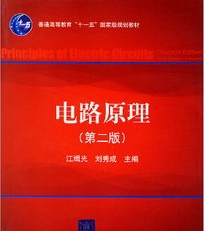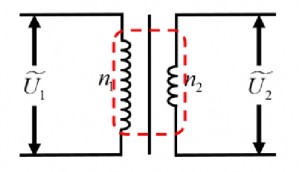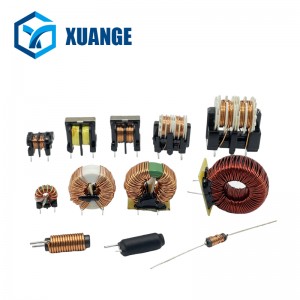First of all, regarding whether energy can be stored, let’s look at the difference between ideal transformers and actual operating transformers:
1. Definition and characteristics of ideal transformers
Common drawing methods of ideal transformers
An ideal transformer is an idealized circuit element. It assumes: no magnetic leakage, no copper loss and iron loss, and infinite self-inductance and mutual inductance coefficients and does not change with time. Under these assumptions, the ideal transformer only realizes the conversion of voltage and current, without involving energy storage or consuming energy, but only transfers the input electrical energy to the output end.
Because there is no magnetic leakage, the magnetic field of the ideal transformer is completely confined to the core, and no magnetic field energy is generated in the surrounding space. At the same time, the absence of copper loss and iron loss means that the transformer will not convert electrical energy into heat or other forms of energy loss during operation, nor will it store energy.
According to the content of “Circuit Principles”: When a transformer with an iron core works in an unsaturated core, its magnetic permeability is large, so the inductance is large, and the core loss is negligible, it can be approximately regarded as an ideal transformer.
Let’s look at his conclusion again. “In an ideal transformer, the power absorbed by the primary winding is u1i1, and the power absorbed by the secondary winding is u2i2=-u1i1, that is, the power input to the primary side of the transformer is output to the load through the secondary side. The total power absorbed by the transformer is zero, so the ideal transformer is a component that does not store energy or consume energy.
” Of course, some friends also said that in the flyback circuit, the transformer can store energy. In fact, I checked the information and found that its output transformer has the function of storing energy in addition to achieving electrical isolation and voltage matching. The former is the property of the transformer, and the latter is the property of the inductor. Therefore, some people call it an inductor transformer, which means that the energy storage is actually the inductor property.

2. Characteristics of transformers in actual operation
There is a certain amount of energy storage in actual operation. In actual transformers, due to factors such as magnetic leakage, copper loss and iron loss, the transformer will have a certain amount of energy storage.
The iron core of the transformer will produce hysteresis loss and eddy current loss under the action of the alternating magnetic field. These losses will consume part of the energy in the form of heat energy, but will also cause a certain amount of magnetic field energy to be stored in the iron core. Therefore, when the transformer is put into operation or cut off, due to the release or storage of magnetic field energy in the iron core, a short-term overvoltage or surge phenomenon may occur, causing impact on other equipment in the system.
3. Inductor energy storage characteristics
When the current in the circuit begins to increase, the inductor will hinder the change of current. According to the law of electromagnetic induction, a self-induced electromotive force is generated at both ends of the inductor, and its direction is opposite to the direction of current change. At this time, the power supply needs to overcome the self-induced electromotive force to do work and convert the electrical energy into magnetic field energy in the inductor for storage.
When the current reaches a stable state, the magnetic field in the inductor no longer changes, and the self-induced electromotive force is zero. At this time, although the inductor no longer absorbs energy from the power supply, it still maintains the magnetic field energy stored before.
When the current in the circuit begins to decrease, the magnetic field in the inductor will also weaken. According to the law of electromagnetic induction, the inductor will generate a self-induced electromotive force in the same direction as the current decrease, trying to maintain the magnitude of the current. In this process, the magnetic field energy stored in the inductor begins to be released and converted into electrical energy to feed back into the circuit.
Through its energy storage process, we can simply understand that compared with the transformer, it only has energy input and no energy output, so the energy is stored.
The above is my personal opinion. I hope it will help all the designers of complete box transformers to understand transformers and inductors! I would also like to share with you some scientific knowledge: small transformers, inductors, and capacitors disassembled from household appliances should be discharged before touching or repaired by professionals after power outages!
This article comes from the Internet and the copyright belongs to the original author
Post time: Oct-04-2024


